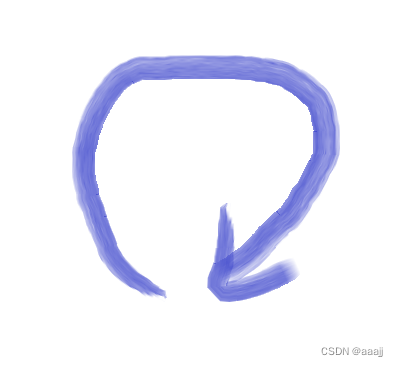【Android】app中阻塞的looper为什么可以响应touch事件
这里,我们考虑一个问题,Android中的应用是一个looper线程,没有任务时就阻塞着,其他线程通过handler调用等方式向主线程looper发送任务,

如果点击应用上的按钮,应用是怎么及时响应的呢,
是专门启动了一个额外的线程去监控input事件么?
这里直接给出答案,input事件传送给了系统IMS,IMS通过inputchannel把input传送给应用,而应用中的主线程looper监控了inputchannel的fd,
这里看一下主线程looper是怎么实现的监控inputchannel的fd。
在应用创建的时候,会调用ViewRootImpl的serView方法,
frameworks/base/core/java/android/view/ViewRootImpl.java
setView
mInputEventReceiver = new?WindowInputEventReceiver(inputChannel,
这里传入了主线程的looper给WindowInputEventReceiver
这个构造方法,调用其父类的构造
public?InputEventReceiver(InputChannel?inputChannel, Looper?looper) {
if?(inputChannel?== null) {
throw?new?IllegalArgumentException("inputChannel must not be null");
}
if?(looper?== null) {
throw?new?IllegalArgumentException("looper must not be null");
}
mMessageQueue?= looper.getQueue();
mReceiverPtr?= nativeInit(new?WeakReference<InputEventReceiver>(this),
mInputChannel, mMessageQueue);
mCloseGuard.open("InputEventReceiver.dispose");
}
static?jlong?nativeInit(JNIEnv* env, jclass?clazz, jobject?receiverWeak,
jobject?inputChannelObj, jobject?messageQueueObj) {
std::shared_ptr<InputChannel> inputChannel?=
android_view_InputChannel_getInputChannel(env, inputChannelObj);
if?(inputChannel?==?nullptr) {
jniThrowRuntimeException(env, "InputChannel is not initialized.");
return?0;
}
sp<MessageQueue> messageQueue?= android_os_MessageQueue_getMessageQueue(env, messageQueueObj);
if?(messageQueue?==?nullptr) {
jniThrowRuntimeException(env, "MessageQueue is not initialized.");
return?0;
}
sp<NativeInputEventReceiver> receiver?= new?NativeInputEventReceiver(env,
receiverWeak, inputChannel, messageQueue);
status_t?status?= receiver->initialize();
其中,receiver->initialize();
调用到
status_t?NativeInputEventReceiver::initialize() {
setFdEvents(ALOOPER_EVENT_INPUT);
return?OK;
}
void?NativeInputEventReceiver::setFdEvents(int?events) {
auto&& fd?= mInputConsumer.getChannel()->getFd();
if?(events) {
mMessageQueue->getLooper()->addFd(fd.get(), 0, events, this, nullptr);
} else?{
mMessageQueue->getLooper()->removeFd(fd.get());
}
}
这里,打不过就加入,把inputchannel的fd也加入到主线程looper的epool监控之中。
本文来自互联网用户投稿,该文观点仅代表作者本人,不代表本站立场。本站仅提供信息存储空间服务,不拥有所有权,不承担相关法律责任。 如若内容造成侵权/违法违规/事实不符,请联系我的编程经验分享网邮箱:chenni525@qq.com进行投诉反馈,一经查实,立即删除!
- Python教程
- 深入理解 MySQL 中的 HAVING 关键字和聚合函数
- Qt之QChar编码(1)
- MyBatis入门基础篇
- 用Python脚本实现FFmpeg批量转换
- 【ArkUI】如何调整组件位置
- 网络安全(黑客)—2024自学
- 关于“Python”的核心知识点整理大全60
- Web开发自动测试工具-Selenium的具体使用办法(填坑中……)
- Mybatis配置-数据库厂商标识(databaseIdProvider)
- Django 为应用定制化admin独立后台
- 内网环境横向移动——利用DCOM(1)
- 【Filament】壁纸
- Python join()方法:合并字符串及 dir()和help()帮助函数
- 基于 Ncalrpc 协议 NDR64 线路接口的 Hook 实现系统热键屏蔽(一)